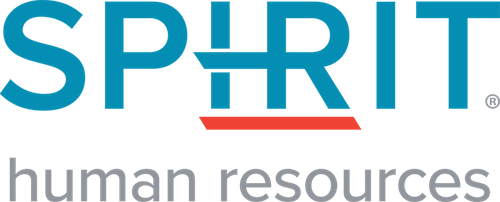Understanding the 3 Most Common Workplace Diversity and Inclusion Concerns

Below, we’ll discuss three of the most common D&I concerns and how your company can easily navigate them.
Defining D&I for Your Business
Each organization’s culture is vastly different, so the definition of D&I will naturally vary from one to the next. Your guidelines might be influenced by the size of your business, the diverse makeup of your workforce and even your industry.
An effective D&I program will get you to a good place with education and awareness, but issues could still arise, whether intentional or not. Understanding common concerns is key to building a strong foundation for your company culture.
Types of Common D&I Concerns
D&I issues can take many forms and appear in workplaces of any size. These situations, by legal definition, involve a perpetrator and a victim, meaning that immediate action toward resolution is necessary in any instance.
Although numerous types of these concerns exist, here are three of the most common:
1. Discrimination and Harassment
According to the U.S. Department of Labor, discrimination is best defined as someone being treated unjustly based on their identity or background, including their race, religion, sex, sexual orientation, gender identity, national origin, disability or status as a protected veteran. Further, Equal Employment Opportunity laws explicitly prohibit job discrimination in most workplaces.
Discrimination is a broad category and takes many forms, making it the most common D&I concern. This can look like:
- Exclusion from groups, meetings or projects based on personal characteristics.
- Passing up an employee due for a promotion or raise because of their identity.
- Direct harassment toward an employee.
The U.S. Equal Employment Opportunity Commission defines harassment as “unwelcome conduct” based on the identities and backgrounds mentioned previously. Harassment can take the form of offensive jokes, mockery, intimidation, threats and interference with work performance.
2. Microaggressions
Microaggressions are any comment, action or slight that puts someone down based on their identity or background, regardless of intent. Microaggressions are more subtle than direct harassment but can affect the receiving party profoundly. When neglected, these slights compound to a point that impacts the safety and well-being of employees across diverse backgrounds.
Types of Microaggressions
Microaggressions in the workplace can be verbal, behavioral or environmental:
- Verbal microaggressions include making comments or assumptions, asking invasive questions or refusing to understand someone’s perspective in ways that prove offensive to one’s identity.
- Behavioral microaggressions are actions that alienate a person or group based on an unspoken bias. These behaviors include exclusion based on assumption, giving an employee feedback specific to their identity or assuming an employee’s competency based on their first language spoken.
- Environmental microaggressions occur when the workplace environment does not represent or reflect the company’s various groups. This can include issues that might affect accessibility in the workplace or a lack of representation in a company’s marketing materials.
3. Implicit Bias
Implicit bias can occur when an individual subconsciously perceives or understands a group of people differently based on their background. One of the most common examples of implicit bias in practice is when competency (or lack thereof) is assumed based on another person’s identity or background, including age, gender or ethnicity.
Addressing Common Issues
The best way to deal with these matters is to prepare an action plan before they happen. When multiple concerns stack up, they become an increasingly significant burden for the culture and environment of the organization as a whole. It is essential to understand when to act, not just how to act.
Education and Awareness
The best way to prepare for D&I challenges is to prevent them from happening in the first place. Educating the workplace about what these look like on a day-to-day basis will help employees understand when and how issues can occur.
Including employees when creating an avenue for reporting and addressing concerns will empower them to speak up when they see problems or experience them directly. Employees will feel more comfortable acknowledging such circumstances if they are familiar with the reporting process.
Your D&I policy should also clearly outline the repercussions of failing to follow any company guidelines — depending on your program, this can look like additional D&I training, probation or even termination.
Taking Direct Action
When prevention isn’t enough, intervention is essential. D&I issues affect everyone in the organization, and it’s vital to have a clear pathway for addressing them. Once these procedures are established, the person(s) in charge of enforcing the D&I policy must consistently follow them when concerns arise.
Potential Employer Liability
Failure to take action when things like discrimination, harassment, microaggressions or demonstrations of implicit bias occur can leave your company liable for any resulting “negative employment action” as defined by the EEOC (including termination, loss of wages or failure to promote or hire).
Preparation is Key
In D&I and beyond, having a plan of action for potential issues is key to the long-term success of any business.
From personalized guidance by an HR expert to our all-in-one HRIS software, we are here to help you build your policies and simplify your workflow. Spirit HR’s full-scale services can help you prepare yourself and your team for whatever comes your way. Schedule a call with us today to see how we can help your organization thrive.
Is Your HR Working for You?
Latest Blogs from Spirit HR
Your Quick Guide to E-Verify
The federal E-Verify program has been around in some form since 1996, and it’s only getting bigger. With Florida joining the program earlier this year, around half of all states now require E-Verify participation in some way. Enrolling in the program isn’t difficult,...
3 Reasons to Outsource Your HR
Navigating the complexities of HR management can be a daunting task for businesses, especially when streamlining operations and optimizing costs are crucial for success. Outsourcing your HR functions can be a game-changer, providing the breathing room you need as a...
3 Steps to Improve Health and Safety Compliance in Your Workplace
Health and safety are two terms that can seem tedious concerning the workplace, but ignoring them and the standards they entail could result in injury, illness or even death. Prevention and preparation are integral to a safe, happy and compliant organization. Here are...
